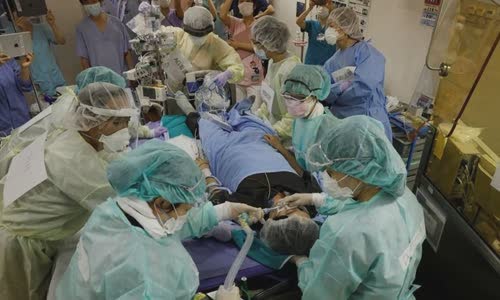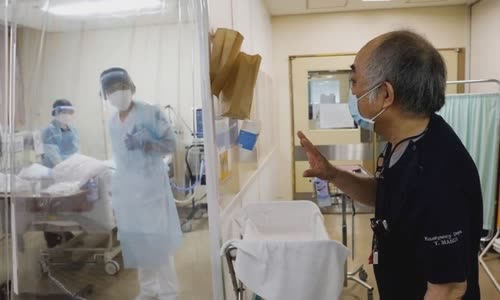One day in June, doctors in blue uniforms and white blouses sat in the Seibu hospital meeting room, looking at the presentation projected on the wall.
"Who remembers these things?" Said a doctor at the back of the room when Yoshihiro Masui, the director of the hospital's intensive care center in Yokohama, examined the presentation slides.

Seibu hospital doctors attended a training session last month Photo: Reuters.
The presentation, with numerous colorful charts, outlined dozens of new safety protocols that can be applied in hospitals, from conventional surgery to dialysis.
A few weeks ago, Seibu was one of the most serious outbreaks of Covid-19 in Japan, with about 80 cases, 43 of which were hospital staff.
For most of May, the 500-bed hospital in the port city of Yokohama, about 30 km south of Tokyo, was almost empty.
Now, when Japan abolishes the state of emergency, hospitals like Seibu face the task of not letting the disease outbreak again.
"We cannot face the disease we have just experienced again," said Masui, the emergency doctor who was responsible for the hospital's response to Covid-19.
Doctors at Seibu Hospital were the first to be dispatched during the outbreak in Japan.
After treating dozens of patients, one with no fever and no other symptoms of nCoV infection, was taken to Senbu hospital in early April due to an accident.
Masui said he felt responsible for the outbreak in the hospital.
"I have urged the hospital to accept suspected nCoV patients even though they know other hospitals are turning their backs on them," he said.
Japan has recorded more than 18,500 nCoV cases to date and nearly 1,000 deaths.

Doctor Yoshihiro Masui talks to a nurse inside a intensive care unit Photo: Reuters.
But for health workers, the risk of a new outbreak is a permanent threat.
New safety precautions against viruses may make life-saving measures more difficult.
Kentaro Sato, 29, an emergency physician and accident, spent two weeks in isolation at home after he resuscitated a child with a sudden cardiac arrest.
"I knew I had to wear protective gear first but in an emergency I thought, this is a child, I have to do something to help him," Sato said.
Months before the outbreak in Seibu, the hospital accepted patients rejected or transferred by other hospitals.
Since reopening on June 8, Seibu Hospital welcomes about 450 patients a day.
"We cannot maintain operations if this is the case," Sano said, adding that the hospital lost more than half of its outpatient service revenue in May.
At the entrance to the hospital, elderly patients lined up waiting to have their body temperature measured.
Inside, a notice board in the dark corridor of the hospital attached a letter of deputy director Sano to the staff.
"I'm sure many of you, like me, are feeling miserable, worried, regretting and angry," he wrote.



 Jeff Gray
Jeff Gray







